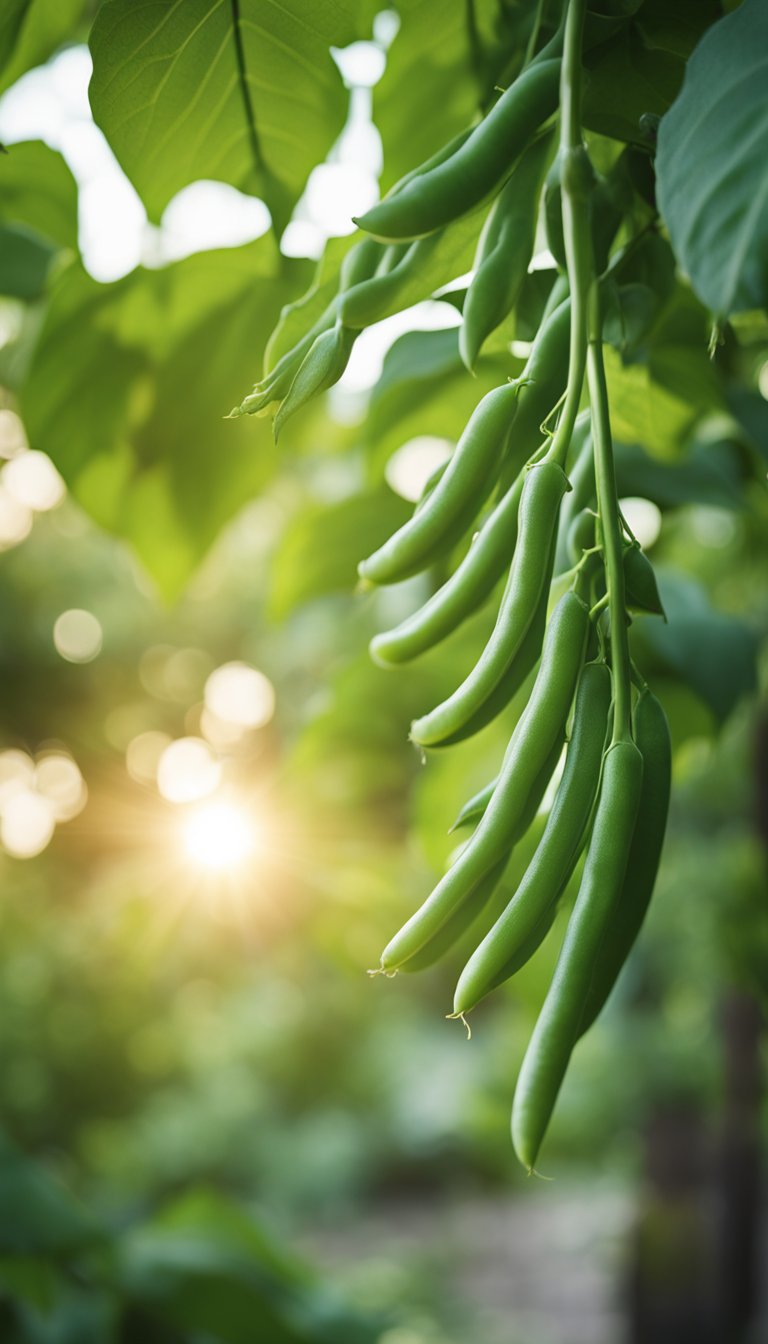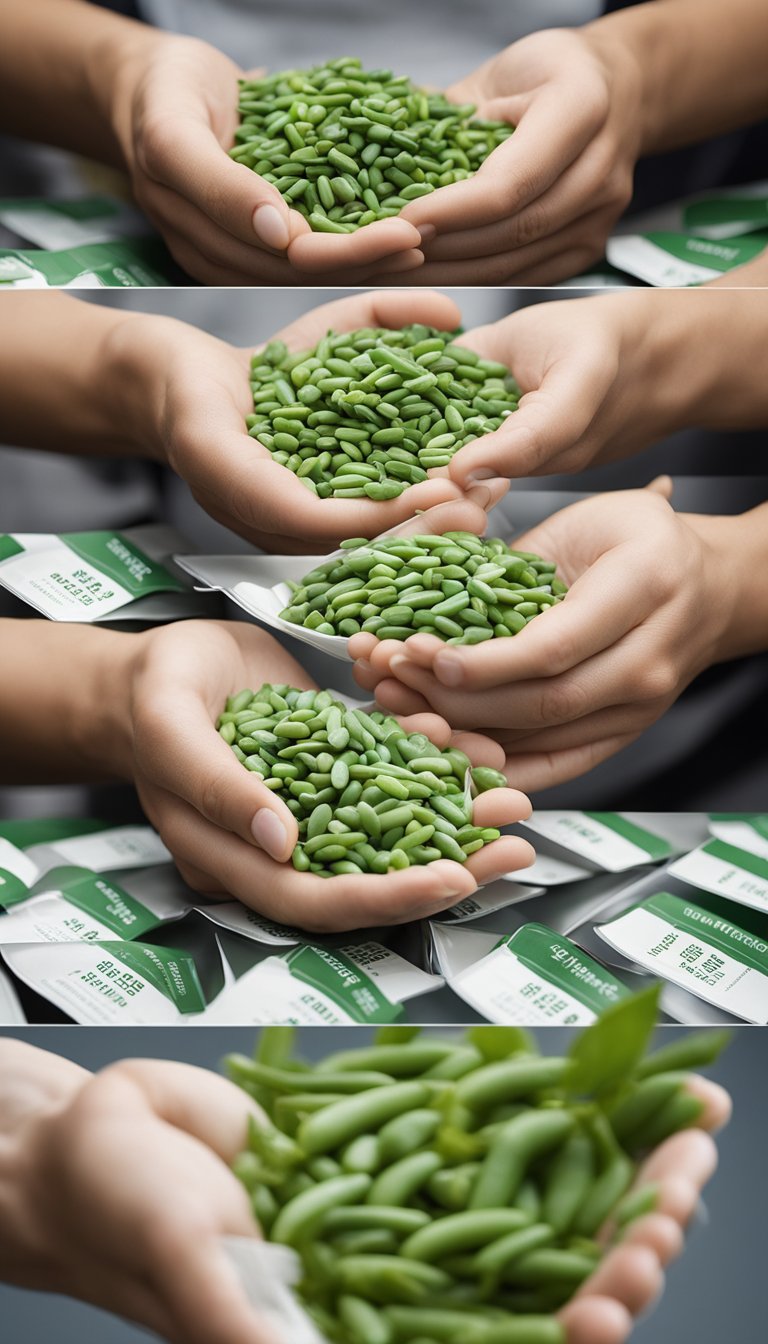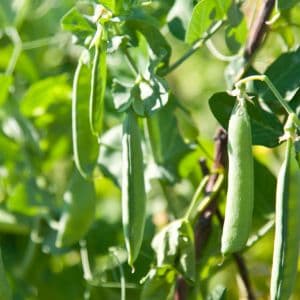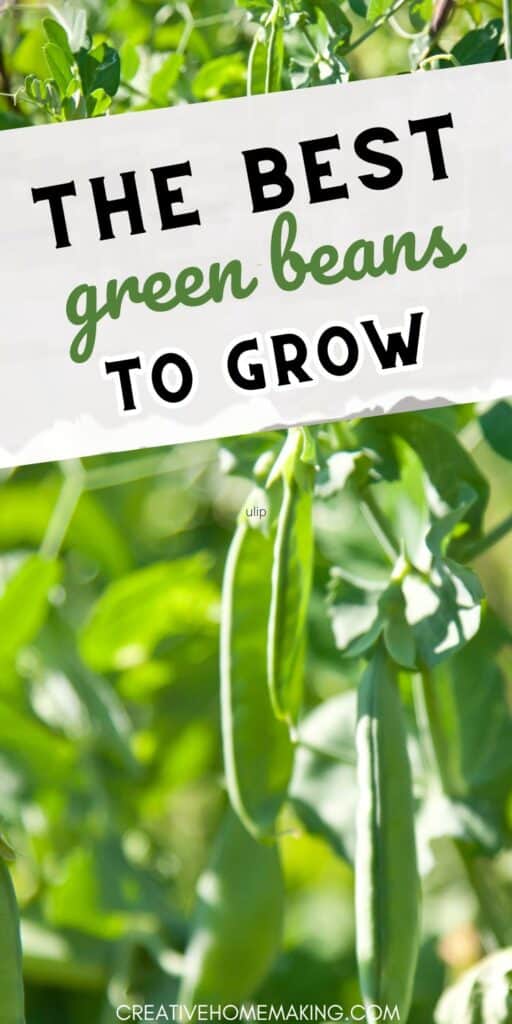If you’re looking for a vegetable that’s easy to grow and produces abundant yields, green beans are an excellent choice. Not only are they a popular addition to many dishes, but they also have a high nutritional value.
This post may contain affiliate links.
However, with so many varieties of green beans available, it can be challenging to decide which ones to grow in your home garden.
When it comes to selecting the best green beans to grow, there are several factors to consider. First, you’ll want to choose a variety that is well-suited to your growing conditions, whether you have a small patio garden or a larger plot of land.
You’ll also want to consider factors such as flavor, texture, and disease resistance, as well as whether you prefer bush or pole varieties. In this article, we’ll take a closer look at some of the best green beans to grow, so you can make an informed decision and enjoy a bountiful harvest.
Selecting the Right Green Bean Varieties
When it comes to growing green beans in your home garden, selecting the right variety is key to a successful harvest. With so many different types of green beans available, it can be overwhelming to choose the best one for your needs.
In this section, we’ll explore some of the most popular green bean varieties and help you decide which one is right for you.
Related Article: How to Grow Green Beans in Pots: A Beginner’s Guide
Bush Beans vs. Pole Beans
The first decision you’ll need to make is whether to grow bush beans or pole beans. Bush beans are shorter and more compact, making them a good choice for small gardens or container planting.
Pole beans, on the other hand, grow tall and require support, but they tend to produce more beans over a longer period of time. Consider your space and needs before deciding which type to grow.
Popular Varieties for Home Gardening
There are many popular green bean varieties that are well-suited for home gardening. Kentucky Wonder is a classic pole bean that produces a high yield of flavorful beans. Blue Lake is a popular bush bean that is easy to grow and produces a reliable crop.
Fortex is a pole bean that is known for its long, slender beans and excellent flavor. Contender is a bush bean that is resistant to many common bean diseases and produces a consistent crop.
Heirloom and Hybrid Options
If you’re looking for something a little different, consider heirloom or hybrid green bean varieties. Scarlet Runner is a pole bean with bright red flowers that is both ornamental and edible.
Lima beans are a type of pole bean that produce large, flat beans with a buttery texture. Romano beans are a flat, Italian-style bean that is great for grilling or sautéing. Seed catalogs are a great resource for finding unique green bean varieties to try in your garden.
Whether you prefer filet beans, snap beans, or derby beans, there’s a green bean variety out there that’s perfect for your garden. With a little research and planning, you can enjoy fresh green beans all season long.

Planting and Growing Conditions
When it comes to growing green beans, planting and growing conditions are crucial to ensure a bountiful harvest. Here are some tips to help you get started.
Soil Preparation and Amendments
Green beans thrive in well-draining soil that is rich in organic matter. Before planting, amend your soil with aged compost to provide the necessary nutrients for healthy growth. Make sure the soil is loose and friable, so the roots can easily penetrate the soil.
Planting Seeds and Germination
Green beans can be directly sown into the soil after the danger of frost has passed. Plant the seeds about 1-2 inches deep and 2-4 inches apart. Keep the soil moist but not waterlogged to encourage germination. The seeds should germinate within 7-10 days.
Sunlight and Watering Needs
Green beans require full sun to thrive. Plant them in an area that receives at least 6-8 hours of direct sunlight per day. Water the plants regularly, making sure the soil remains consistently moist but not waterlogged.
Support Structures for Climbing Varieties
Climbing varieties of green beans require support structures to grow properly. Trellises, stakes, or poles can be used to support the plants. Make sure the support structure is sturdy enough to hold the weight of the plants and the beans.
By following these planting and growing conditions, you can ensure a healthy and bountiful harvest of green beans.
Remember to fertilize the plants regularly and mulch around the base to conserve moisture and suppress weeds. With a little care and attention, you’ll be enjoying fresh, delicious green beans in no time!

Caring for Your Green Bean Plants
Growing green beans is a rewarding experience, but it requires proper care to ensure a healthy and bountiful harvest. Here are some tips on how to care for your green bean plants:
Fertilizing and Watering
Green beans need regular watering to thrive. It’s important to keep the soil moist, but not waterlogged. Overwatering can lead to root rot and other diseases. Water your plants deeply once a week, and more often during hot, dry weather.
In addition to watering, green beans also require regular fertilization. Use a balanced fertilizer that is high in phosphorus and potassium, but low in nitrogen. Too much nitrogen can lead to excessive foliage growth and reduce yield.
Managing Weeds and Mulching
Weeds can compete with green beans for nutrients and water, so it’s important to keep them under control. Mulching can help suppress weeds and retain moisture in the soil. Use organic mulch such as straw, leaves, or grass clippings.
Pest and Disease Control
Green beans are susceptible to a variety of pests and diseases, including bean beetles, aphids, viruses, powdery mildew, and mold.
Regular inspection and treatment can help prevent infestations. Use insecticidal soap or neem oil to control aphids and other insect pests. For fungal diseases, use a copper-based fungicide.
Proper Air Circulation and Spacing
Green beans need good air circulation to prevent the buildup of moisture and reduce the risk of fungal diseases. Proper spacing is also important to ensure that each plant has enough room to grow. Space your plants 4-6 inches apart in rows that are 18-24 inches apart.
To promote proper air circulation, you can also use netting or row covers to protect your plants from pests while still allowing air to circulate.
Harvesting and Storing Your Crop
Growing green beans in your garden is a rewarding experience. Once your beans have reached maturity, it’s time to harvest them. Here are some tips for harvesting and storing your crop.
When and How to Harvest
The best time to harvest your green beans is when they are young and tender. You can tell if they are ready by gently bending them. If they snap easily, they are ready to pick. If they bend, they are not ready yet.
To harvest your beans, simply pick them off the vine. Be careful not to damage the plant or the remaining beans. If you have a lot of beans, you may want to consider picking them in stages to ensure that you get the most tender beans.
Canning and Freezing for Long-Term Storage
If you have a lot of beans and want to store them for later use, you can either can or freeze them. Canning is a great way to preserve your beans for long-term storage. You can either use a pressure canner or a boiling water canner. Follow the instructions carefully to ensure success.
Freezing is another option for storing your beans. To freeze your beans, blanch them in boiling water for a few minutes, then transfer them to a bowl of ice water to stop the cooking process. Once they are cool, place them in freezer bags or containers and store them in the freezer.
Keeping Beans Fresh for Immediate Use
If you want to use your beans right away, you can store them in the refrigerator for up to a week. To keep them fresh, place them in a plastic bag or container and store them in the crisper drawer.
Remember, the first frost will signal the end of the growing season for your green beans. Be sure to harvest all of your beans before the first frost to ensure that you get the most out of your crop.
Creative Uses and Recipes
Innovative Green Bean Dishes
Green beans are a versatile vegetable that can be used in a variety of innovative dishes. One of the most popular ways to use green beans is in a stir-fry.
Simply sauté your green beans with some garlic and ginger, and add in your favorite protein and vegetables for a quick and healthy meal. Another great way to use green beans is in a salad. Toss them with some cherry tomatoes, feta cheese, and a balsamic vinaigrette for a refreshing summer salad.
If you’re feeling adventurous, try making green bean fries. Simply cut your green beans into thin strips, coat them in a mixture of flour and spices, and bake them in the oven until crispy. They’re a healthy alternative to traditional french fries and are sure to impress your guests.
Green Beans as Companion Plants
Green beans are not only a delicious vegetable, but they also make great companion plants. They are known to attract hummingbirds and other pollinators to your garden, which can help improve the health of your other plants.
Additionally, green beans can be used to improve the soil quality in your garden. They are nitrogen-fixing plants, which means they take nitrogen from the air and convert it into a form that can be used by other plants.
If you’re short on space, green beans are a great option for container gardening. You can grow them in a small pot on your balcony or patio and still enjoy fresh, homegrown vegetables. There are also compact varieties of green beans that are perfect for small gardens.
When choosing which green beans to grow, consider heirloom varieties. These are often more flavorful and have a wider range of colors and textures than traditional green beans. They also help preserve genetic diversity in our food system.
Frequently Asked Questions
What are the tastiest green beans to grow?
If you’re looking for delicious green beans to grow, we recommend trying out the Blue Lake, Kentucky Wonder, or Provider varieties. These are all known for their sweet and tender flavor.
Which green beans are best suited for container gardening?
If you’re planning on growing green beans in containers, we suggest trying out the Bush Blue Lake or French filet varieties. These are compact plants that don’t require a lot of space and produce delicious beans.
What are the top disease-resistant green bean varieties?
If you’re concerned about diseases affecting your green bean crop, we recommend trying out the Strike, Derby, or Roma II varieties. These are all known for their resistance to common bean diseases.
Can you recommend some stringless green bean varieties for home gardening?
If you prefer stringless green beans, we suggest trying out the Blue Lake, Kentucky Blue, or Topcrop varieties. These are all stringless and produce tender and tasty beans.
What is the ideal month to start planting green beans?
The ideal time to plant green beans is in the spring, after the last frost has passed. This is usually around mid-April to early May, depending on your location.
Which green beans are the best choice for canning purposes?
If you’re planning on canning your green beans, we recommend trying out the Blue Lake, Kentucky Wonder, or Roma II varieties. These are all great for canning and will provide you with delicious beans to enjoy all year round.
Follow my gardening board on Pinterest.



